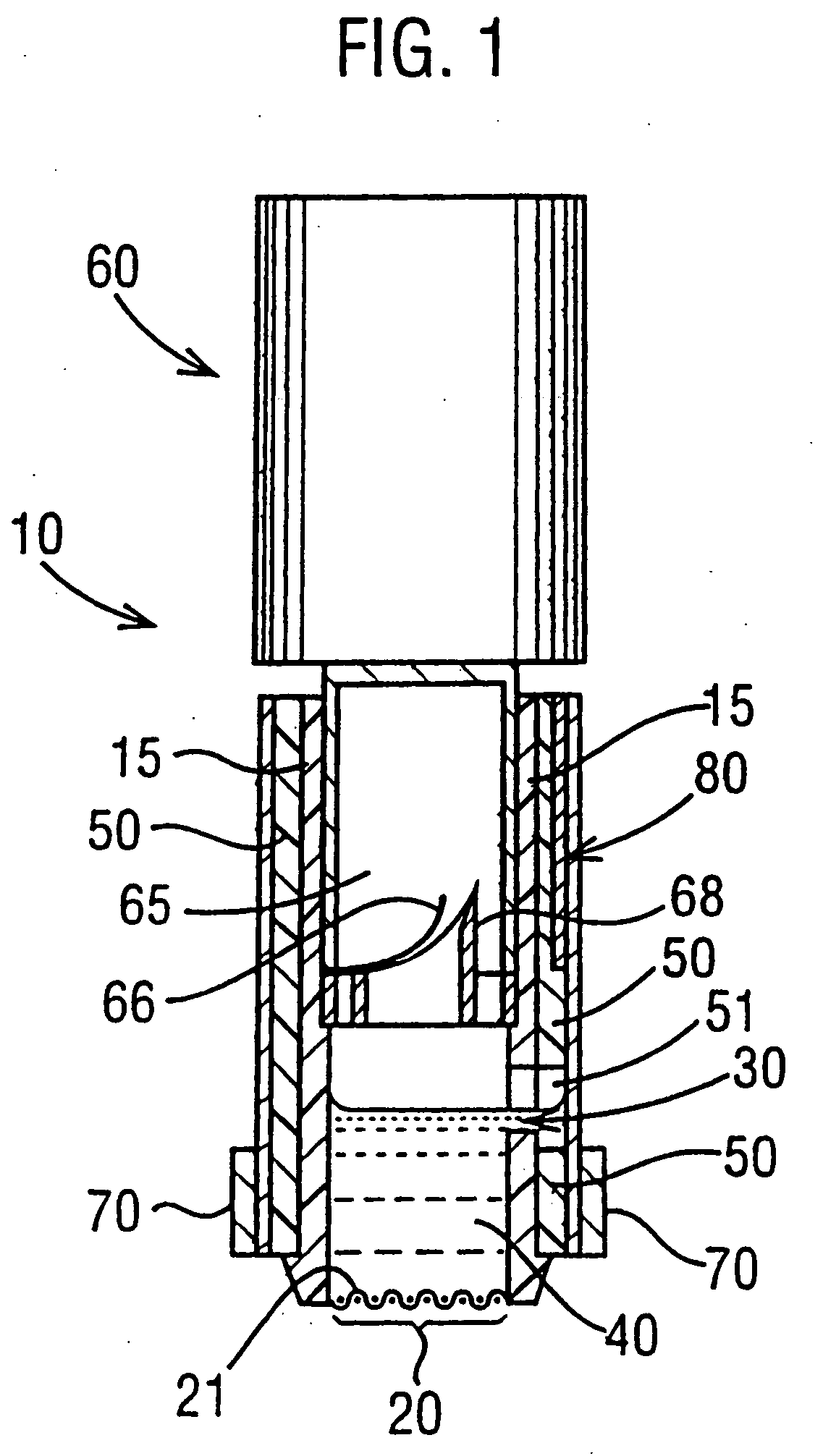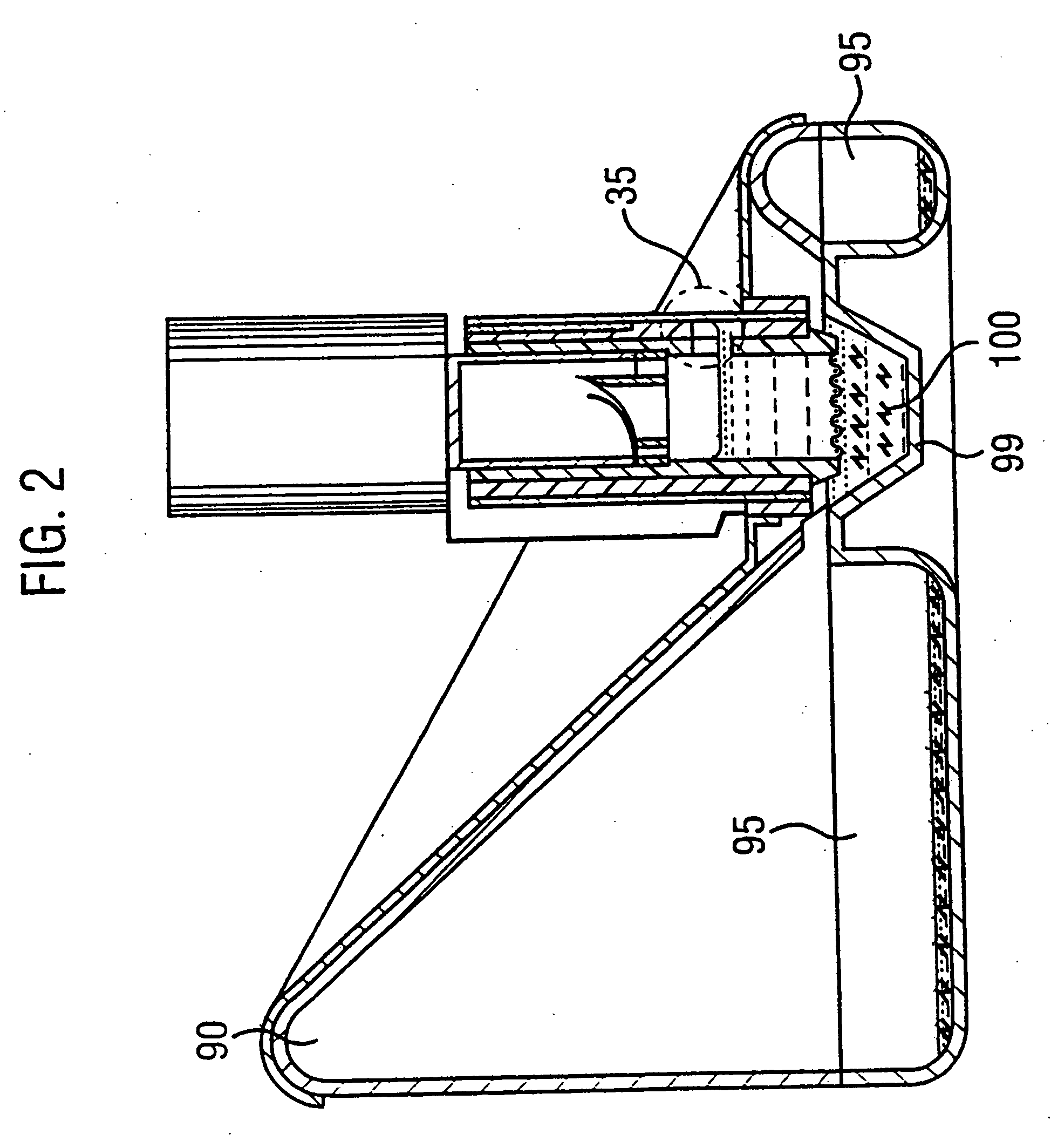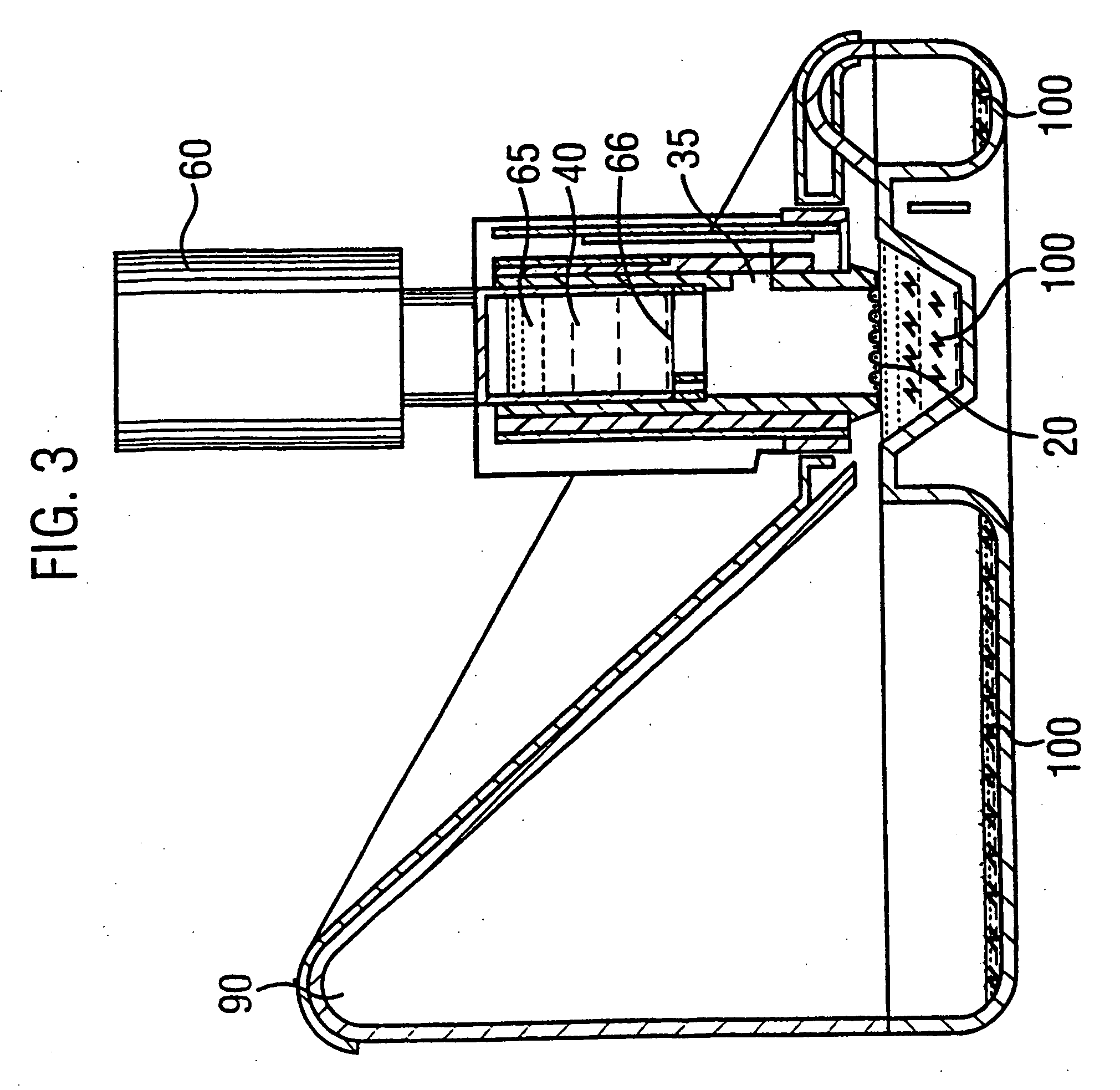Devices for motile sperm separation
a technology of sperm separation and devices, applied in the field of male fertility tests, can solve the problems of net distinguishing between motile and non-motile, and achieve the effect of simple and cheap production
- Summary
- Abstract
- Description
- Claims
- Application Information
AI Technical Summary
Benefits of technology
Problems solved by technology
Method used
Image
Examples
Embodiment Construction
[0097] The device (10) shown in FIG. 1 comprises: a cylindrical plastic vessel (15); a sample inlet port (20), covered by a nylon mesh (21) formed from 0.15 mm strands spaced by 0.25 mm: a hole (30) in its side, shown in the open position: a solution (40) of EBSS supplemented with 0.88 mg / ml hyaluronic acid and 0.45% BSA; a plastic rotatable collar (50), including a hole (51) which is shown aligned with hole (30) to form an outlet port (35); a button (60, shown depressed), which houses a battery and circuitry for powering a circumferential heat source (70) and attached to which is a solution reservoir (65, shown empty), a foil seal (66, shown broken), and a hollow foil cutter (68); and an externally mounted test strip (80).
[0098]FIG. 2 shows the FIG. 1 device (10) attached to a semen receptacle (90) with sloped walls. A semen sample (100) has collected in the well (99) at the base of the receptacle (90), but some of it has overflowed into the receptacle overflow (95).
[0099]FIG. 3 ...
PUM
 Login to View More
Login to View More Abstract
Description
Claims
Application Information
 Login to View More
Login to View More - R&D
- Intellectual Property
- Life Sciences
- Materials
- Tech Scout
- Unparalleled Data Quality
- Higher Quality Content
- 60% Fewer Hallucinations
Browse by: Latest US Patents, China's latest patents, Technical Efficacy Thesaurus, Application Domain, Technology Topic, Popular Technical Reports.
© 2025 PatSnap. All rights reserved.Legal|Privacy policy|Modern Slavery Act Transparency Statement|Sitemap|About US| Contact US: help@patsnap.com



